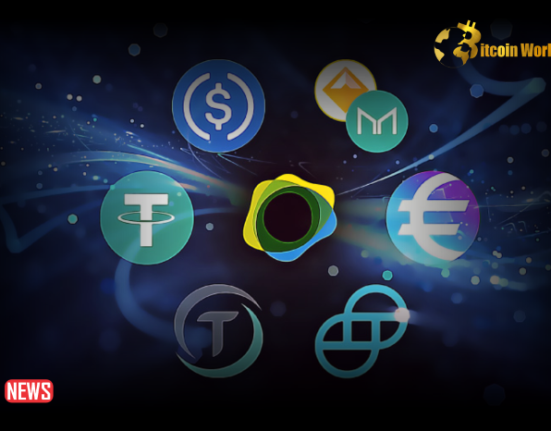Stability has been an ongoing problem in the world of digital currencies. The underlying volatility of cryptocurrencies such as Ethereum and Bitcoin has prevented their general acceptance for regular transactions. Stablecoins, on the other hand, offer a potentially useful way to bridge the gap between digital assets and fiat money. Stablecoins provide a dependable means of carrying out everyday transactions effectively and safely because of their unwavering value proposition.
UNDERSTANDING STABLECOINS
Stablecoins represent a subset of digital assets designed to maintain a stable value, often pegged to fiat currencies, commodities, or other assets. Unlike their volatile counterparts, stablecoins provide predictability and stability in an otherwise fluctuating market. Stablecoins can be divided into three categories:
- Fiat-Collateralized Stablecoins: These stablecoins are backed by reserves of fiat currencies like USD, EUR, or GBP, ensuring a 1:1 peg to the underlying asset.
- Crypto-Collateralized Stablecoins: Backed by other cryptocurrencies, these stablecoins utilize smart contracts and over-collateralization mechanisms to maintain their value.
- Algorithmic Stablecoins: These stablecoins rely on algorithms and smart contracts to regulate the token supply dynamically, aiming to stabilize their value.
- Advantages of Stablecoins for Everyday Transactions
Stablecoins offer numerous benefits that make them an attractive option for everyday transactions:
- Stability: The primary advantage of stablecoins is their stability, providing users with a reliable medium of exchange for daily transactions. Unlike volatile cryptocurrencies, stablecoins offer a consistent store of value, shielding users from the risks of price fluctuations.
- Reduced Transaction Fees: Stablecoin transactions typically incur lower fees compared to traditional banking systems, making them a cost-effective option for micropayments and cross-border transactions. By bypassing intermediaries and leveraging blockchain technology, stablecoins enable seamless peer-to-peer transactions at minimal costs.
- Speed and Efficiency: Transactions with stablecoins are faster and more efficient than traditional banking systems, facilitating real-time settlements without the need for intermediaries. The decentralized nature of blockchain technology ensures that transactions occur swiftly, regardless of geographical boundaries or banking hours.
- accessibility: Stablecoins enable financial inclusion by providing access to digital assets for individuals who may not have access to traditional banking services. With a smartphone and an internet connection, users can create digital wallets and transact with stablecoins from anywhere in the world.
- Transparency and Security: Stablecoins are based on blockchain technology, which provides transactions with immutability and transparency. Each transaction is recorded on the blockchain, providing a secure and tamper-proof ledger of all activities. Advanced cryptographic techniques ensure the security of transactions and user wallets, reducing the risk of fraud or manipulation.
PRACTICAL APPLICATIONS OF STABLECOINS IN EVERYDAY TRANSACTIONS
Stablecoins have a wide range of practical applications in everyday transactions:
- Remittances: Cross-border remittances can be executed quickly and cost-effectively using stablecoins, providing a seamless solution for sending and receiving funds globally. By leveraging blockchain technology, stablecoins eliminate the need for traditional remittance services, reducing fees and settlement times.
- Retail Purchases: Stablecoins can be used for everyday retail transactions, both online and offline, offering consumers a convenient and secure payment option. Retailers can accept stablecoin payments through digital wallets or payment gateways, providing customers with a seamless checkout experience.
- Peer-to-Peer Payments: Stablecoins streamline peer-to-peer payments, enabling individuals to transfer funds directly to each other’s digital wallets without intermediaries. Whether splitting a restaurant bill or paying rent to a roommate, users can transact with stablecoins quickly and efficiently.
- Payroll Payments: Stablecoins can be used by employers to pay employees’ salaries, particularly in areas with shaky banking systems. Stablecoin payments offer an efficient payroll solution, providing employees with instant access to their earnings without delays or fees.
- Cross-Border Trade: Businesses engaged in international trade can leverage stablecoins to settle transactions, reducing the complexity and costs associated with cross-border trade. Stablecoin payments bypass traditional banking systems, enabling seamless transactions between buyers and sellers across different countries.
HOW TO SET UP A STABLECOIN WALLET
Setting up a digital wallet for stablecoins involves several steps to ensure a secure and seamless experience:
- Choose a Trustworthy Wallet Provider: Select a wallet provider that prioritizes security and stablecoin compatibility.
- Register for an Account: Complete the registration process and undergo regulatory-compliant identity verification procedures. Users may need to provide personal information and supporting documentation to authenticate their identities.
- Fund Your Digital Wallet: Fund your digital wallet with fiat money using bank transfers or other payment options. Some wallet providers also allow users to purchase stablecoins directly through the platform using fiat currency.
- Add Stablecoins: Connect to decentralized finance (DeFi) platforms and swap assets through smart contracts to add stablecoins to your wallet. Ensure that your chosen wallet supports the specific stablecoins you intend to use for transactions.
WAYS TO OVERCOME CHALLENGES AND ADOPTION HURDLES
Stablecoins have many benefits, but they are not without drawbacks:
- Regulatory Uncertainties: Stay informed about regulatory changes and select reliable stablecoins that comply with current and new laws. Regulatory uncertainties may impact the adoption and usage of stablecoins in certain jurisdictions, so users should exercise caution and comply with legal requirements.
- Security Concerns: Use trustworthy software or hardware wallets with strong security features to safeguard your stablecoins. Implement best practices for securing digital assets, such as using multi-factor authentication and keeping wallet software updated.
- Market Risks: Diversify stablecoin holdings and educate yourself about stability mechanisms to mitigate market risks. Understand the factors that influence stablecoin prices and monitor market conditions to make informed investment decisions.
OUTLOOK OF STABLECOINS IN EVERYDAY FINANCE
Stablecoin technology has promising prospects:
- Integration and Functionality: Developments in smart contracts may provide programmable elements, enhancing integration and functionality. Stablecoins could facilitate automated financial processes and enable new use cases in decentralized finance (DeFi) ecosystems.
- Scalability and Privacy: Focus on enhancing scalability and privacy features to streamline international payments and remove intermediaries. Stablecoins have the potential to revolutionize cross-border transactions by providing fast, low-cost payment solutions for individuals and businesses worldwide.
- Increased Acceptance: Collaboration between regulatory authorities and stablecoin projects may lead to increased acceptance and usage within the traditional banking sector. As regulatory frameworks evolve and stablecoin projects demonstrate compliance with regulatory requirements, institutional adoption of stablecoins may accelerate.
CONCLUSION
With steady and effective ways to conduct daily transactions, stablecoins are a key progression in the world of digital currencies. With their inherent stability, low transaction fees, and accessibility, stablecoins have the potential to revolutionize the way we transact in the digital age. As adoption grows and regulatory frameworks evolve, stablecoins are poised to play an increasingly prominent role in mainstream finance, driving innovation and financial inclusion globally. By harnessing the power of blockchain technology, stablecoins empower individuals and businesses to transact seamlessly, securely, and affordably in the digital economy.














